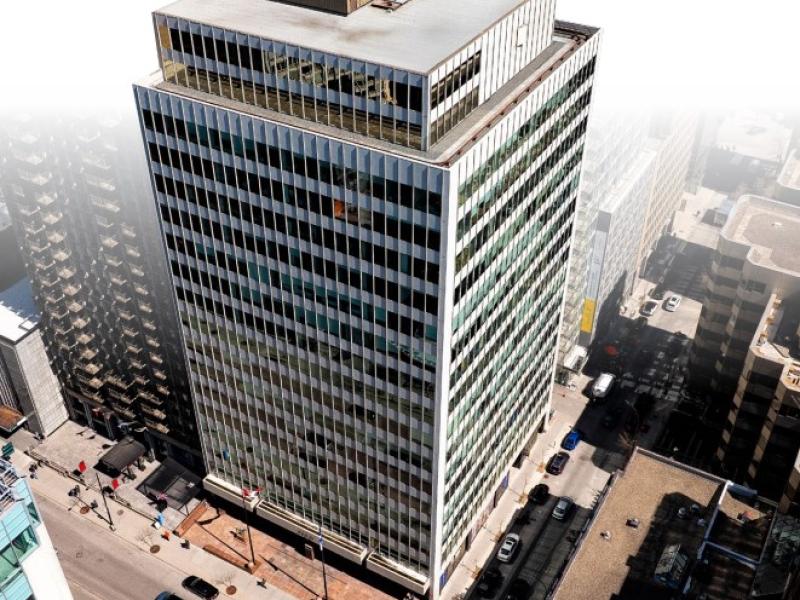Commercial real estate has long been a cornerstone of Canada’s economy.
Spanning from urban centres to suburban hubs, commercial real estate contributes to economic expansion, job creation and community revitalization. As we progress further into the 21st Century, our industry appears to hold great promise – driven by innovation, sustainability and changing market dynamics.
Before exploring its future, we must understand its present state.
Commercial real estate in Canada is comprised mainly of office buildings, retail spaces, industrial warehouses and multifamily residential. Over recent years, the market has undergone significant changes due to technological innovations, interest rates and shifts in consumer behaviour.
Technology has profoundly transformed operations, from artificial intelligence (AI), big data analytics and Internet of Things (IoT) solutions revolutionizing property management, to improving tenant experiences and investment strategies.
AI-powered predictive analytics allow investors to make more informed decisions. Pandemic outbreaks caused rapid shifts in consumer behaviour within retail. E-commerce’s rapid expansion put enormous strain on logistics centres, while remote working practices emerged to alter office usage and design.
COVID, remote work and co-working
There has been a dramatic impact on business operations due to the COVID-19 pandemic forcing businesses to reconsider traditional work models: remote work became an industry trend which still prevails.
As a result, office space demand has dramatically changed, especially among smaller tenants which have shifted to remote working.
Before remote work became widespread among progressive companies, it was often seen as an added benefit or flexible arrangement offered to employees. Its rapid expansion as an effective means for maintaining social distancing and meeting lockdown requirements increased adoption rates.
Many businesses across different sectors have realized they can operate effectively outside the traditional office environment, leading to an irreversible shift in workplace culture toward hybrid models that combine remote collaboration with in-office work. Remote work significantly altered office demand with reduced physical workspace requirements and companies reassessing their needs for office space.
Small office spaces under 3,000 square feet have been particularly hard hit.
Small businesses, startups and professional services firms that typically occupy these spaces have taken to working remotely. This shift has led to an increase in lease cancellations and a reduction in new leasing, as these firms reduce expenses while redirecting resources toward key areas like technology or employee wellbeing.
Companies with offices that continue to employ hybrid work models are decreasing their physical footprint and creating workspaces designed for collaboration rather than daily employee usage. Demand has shifted from traditional office layouts to adaptable spaces to accommodate diverse work styles.
Permanent small office space occupancy levels have fallen, yet this can be partially compensated for through coworking spaces, which provide flexible lease options and are perfect for companies needing occasional office use without long-term lease commitments.
WeWork, Regus and others have taken notice and offer customizable solutions designed to accommodate specific business requirements - a popular feature for freelancers, small businesses and even larger organizations in search of satellite office locations.
Suburban office, and the class-B and -C sector
Another trend is an increasing interest in suburban and rural office spaces, given how remote work reduces the necessity to remain within city centres. Due to less expensive office options outside urban centres, some companies are exploring these as viable solutions. This also serves the needs of employees who prefer working closer to home and avoiding long commutes.
Office demand will depend heavily on the continued adoption of remote and hybrid work models. As businesses adapt, real estate markets could experience further evolution; it is imperative for developers and property managers to remain agile, offering flexible lease terms while creating spaces which can easily be reconfigured or renovated as needs shift.
Class-B and -C buildings are increasingly viewed as potential multifamily conversions, where they can be repurposed to address urban housing shortages. Converting lower-class office buildings into residential mitigates the excess supply of office space, revitalizes older properties and supports the trend toward mixed-use developments.
This strategy ensures these properties remain valuable and contribute to creating vibrant, liveable urban communities.
Sustainability essential to your business
Other emerging trends could further reshape commercial real estate, reflecting adaptation to new realities as well as proactive approaches.
Sustainability has emerged as an imperative, with green building practices designed to mitigate environmental impact through energy and water conservation and the use of sustainable materials.
Canada is at the forefront of this movement, spearheading initiatives such as LEED certification that promote environmentally responsible construction and operations. Green buildings provide several advantages including lower operating costs, improved indoor air quality and greater tenant satisfaction.
Furthermore, eco-conscious tenants and investors are drawn to green properties, which increases their marketability.
The Canadian government encourages sustainable building practices through incentives and regulations, with initiatives such as the Canada Green Building Strategy aiming at lowering greenhouse gas emissions from buildings by encouraging energy-saving designs and retrofits.
Technological integration is revolutionizing commercial real estate into an efficient, user-friendly sector.
Smart buildings are also efficient
Smart buildings equipped with Internet of Things devices and automation systems optimize energy consumption while improving security and increasing tenant comfort. Smart buildings utilize sensors and data analytics to track, control and monitor systems such as lighting, HVAC (heating, ventilation, air conditioning), security and surveillance.
Motion detectors may even adjust lighting depending on occupancy levels to reduce energy waste and maximize savings.
Predictive maintenance systems help identify issues before they turn into expensive problems, while technology enhances tenant experiences: mobile apps allow tenants to control building systems, access amenities and communicate directly with property management. This provides increased convenience and personalization, which contributes to greater tenant retention and satisfaction.
Urbanization remains at the core of Canadian commercial real estate demand. Yet its nature is evolving: mixed-use developments combining residential, commercial and recreational spaces are increasingly sought-after by developers.
Mixed-use developments create vibrant and walkable communities where residents can live, work and play in harmony. Such developments reduce commute times significantly while benefitting local businesses and improving quality of life. Toronto and Vancouver both feature mixed-use districts, such as Canary District and Oakridge Centre, which integrate residential, retail and public amenities into one complex.
Transit-oriented development (TOD), on the other hand, involves creating dense mixed-use communities near public transit hubs. TOD projects aim to reduce car dependence while mitigating congestion and supporting sustainable urban growth.
A new distribution landscape
E-commerce has spurred significant demand for industrial real estate, especially logistics and distribution centres. As online shopping becomes more commonplace, retailers need efficient supply chains as well as strategically situated warehouses to meet consumer expectations for speedy deliveries. Last-mile delivery is also an integral component of e-commerce logistics.
Industrial properties near customers are highly sought-after to facilitate quicker and cost-efficient deliveries; innovations like automated warehouses, drone deliveries and autonomous vehicles are revolutionizing logistics. Companies invest heavily in advanced technologies to streamline operations and enhance efficiency.
Commercial real estate in Canada may hold promise, yet its future faces a variety of obstacles that must be met head-on to expand and innovate. Overcoming these difficulties offers ample opportunity for growth.
While elevated interest rates and financing constraints might raise eyebrows, savvy investors can navigate these challenges.
The first key is to target industries leading the charge in high-growth sectors like healthcare, technology and logistics. These industries boast tenants with unwavering resilience and income streams that remain stable, acting as a shield against economic disruptions.
Prime location is still the cornerstone of any sound investment. Prioritize properties in areas with robust economic fundamentals. This not only safeguards property values but also attracts top-tier tenants, further solidifying your investment.
Think beyond the traditional loan when it comes to financing. Explore alternative funding avenues like joint ventures, private equity funds, or REITs. These options provide access to the capital you need while distributing the risk across multiple investors.
Embrace the environmental movement. Implementing energy-efficient and sustainable building practices creates a win-win scenario: reduced operational costs while attracting environmentally conscious tenants who value properties with a sustainable footprint.
Innovation key to future success
Finally, innovation is key.
Leverage smart building technologies to streamline property management. Automated systems and data-driven insights enhance tenant satisfaction, leading to higher occupancy and increased rental yields.
Regulation changes at federal, provincial, or municipal levels can have significant ramifications for development and operations. Staying up-to-date on regulatory trends while engaging policymakers is vital in successfully navigating this incredibly complicated landscape.
Industry associations like REALPAC play a pivotal role in advocating policies that support growth and sustainability. By taking part in advocacy initiatives, stakeholders can shape regulations serving the industry at large.
Innovation and collaboration are central elements to the future of commercial real estate in Canada. Adopting cutting-edge technologies and sustainable practices while building relationships within the industry are effective strategies to employ to navigate this unique set of hurdles.
Cooperation among developers, technology suppliers, government agencies and community groups can result in comprehensive solutions that benefit all.
Public-private partnerships offer an efficient method for constructing affordable housing and community infrastructure while investing in research and development (R&D), which drives innovation in construction, materials and property management practices.
Research and development initiatives may uncover innovative techniques for increasing energy efficiency, strengthening resilience and optimizing space usage. As the commercial real estate landscape shifts and professionals adapt, continuing education and training have become even more essential.
Programs designed around current trends, technological innovations and eco-friendly practices equip professionals with the skills needed to thrive in an ever-evolving landscape.







